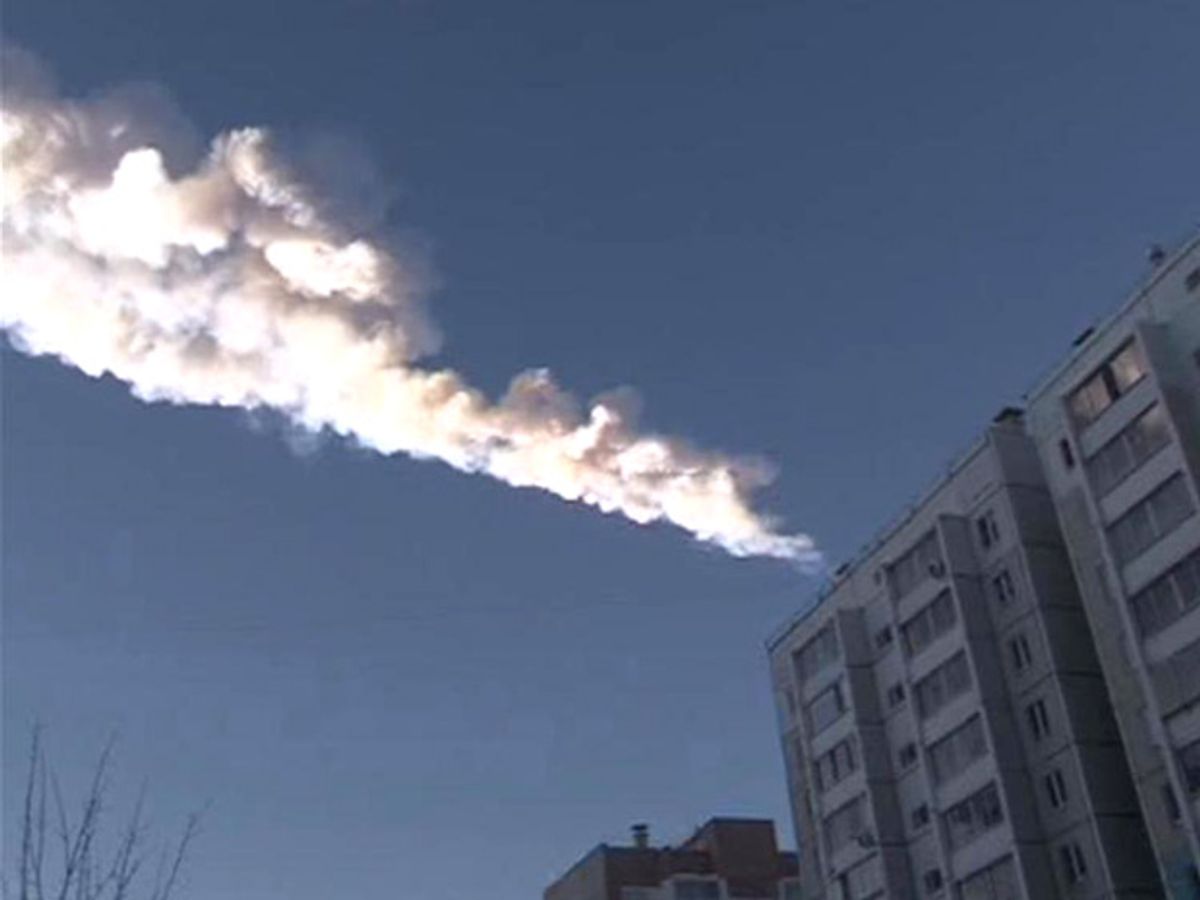The type of meteor that blasted Chelyabinsk, Russia, with the force of a nuclear weapon may hit Earth more often than estimated in previous studies. The latest study, in which researchers examined data from sensors intended to detect atmospheric nuclear explosions, appeared earlier this week in Nature, alongside a pair of related studies, one in Science and another in Nature.
Research published eleven years ago by some of the same scientists had already raised the possibility that so-called small impactors were more common than previously thought. JPL scientist Paul Chodas, who is not one of the study authors, told reporters that the latest estimate is based on small-number statistics. Yet it uses data from about 20 years of observations, twice as long as the previous one. The authors also note that even if they throw away Chelyabinsk and two other events, they get the same size-frequency curve, predicting the same, higher, number of Chelyabinsk-type impacts.
Lucky for the city of Chelyabinsk, the meteor broke up into smaller pieces in the atmosphere, spreading the energy of their explosions over a larger area. The largest chunk found so far is 570 kilograms. That is typical of asteroids less than about 100 meters across. But these are difficult to detect. Existing tracking programs cover most of the thousand-odd asteroids in the solar system over about a 1000 meters across, but there are many more smaller asteroids. As this study illustrates, they also pose a more common hazard.
On the plus side, people occupy a tiny percentage of the Earth. The Natural History Museum of London claims that no human in recorded history has been killed by a meteorite, though some have been hit. Just in case, though, the UN is proposing a plan to share information on inbound asteroids and coordinate a response that could include kamikaze robots for diverting the asteroid's paths, reports NPR.
Let's hope the plan doesn't involve a Cold War-style hair-trigger nuclear response. As IEEE Spectrum has noted, the mere presence of nuclear weapons mean that even a low probability of their misuse could add up to unhappy odds of a nasty surprise. For those looking for morbid and gripping reading, Command and Control, a recent book by Eric Schlosser, contains terrifying anecdotes, including nuclear scares due to Norwegian weather rockets and more than one accidental (but unarmed) aerial nuclear bombing. A too-complex defense may cause as much trouble as the very simple problem of very big rocks.
Lucas Laursen is a journalist covering global development by way of science and technology with special interest in energy and agriculture. He has lived in and reported from the United States, United Kingdom, Switzerland, and Mexico.



